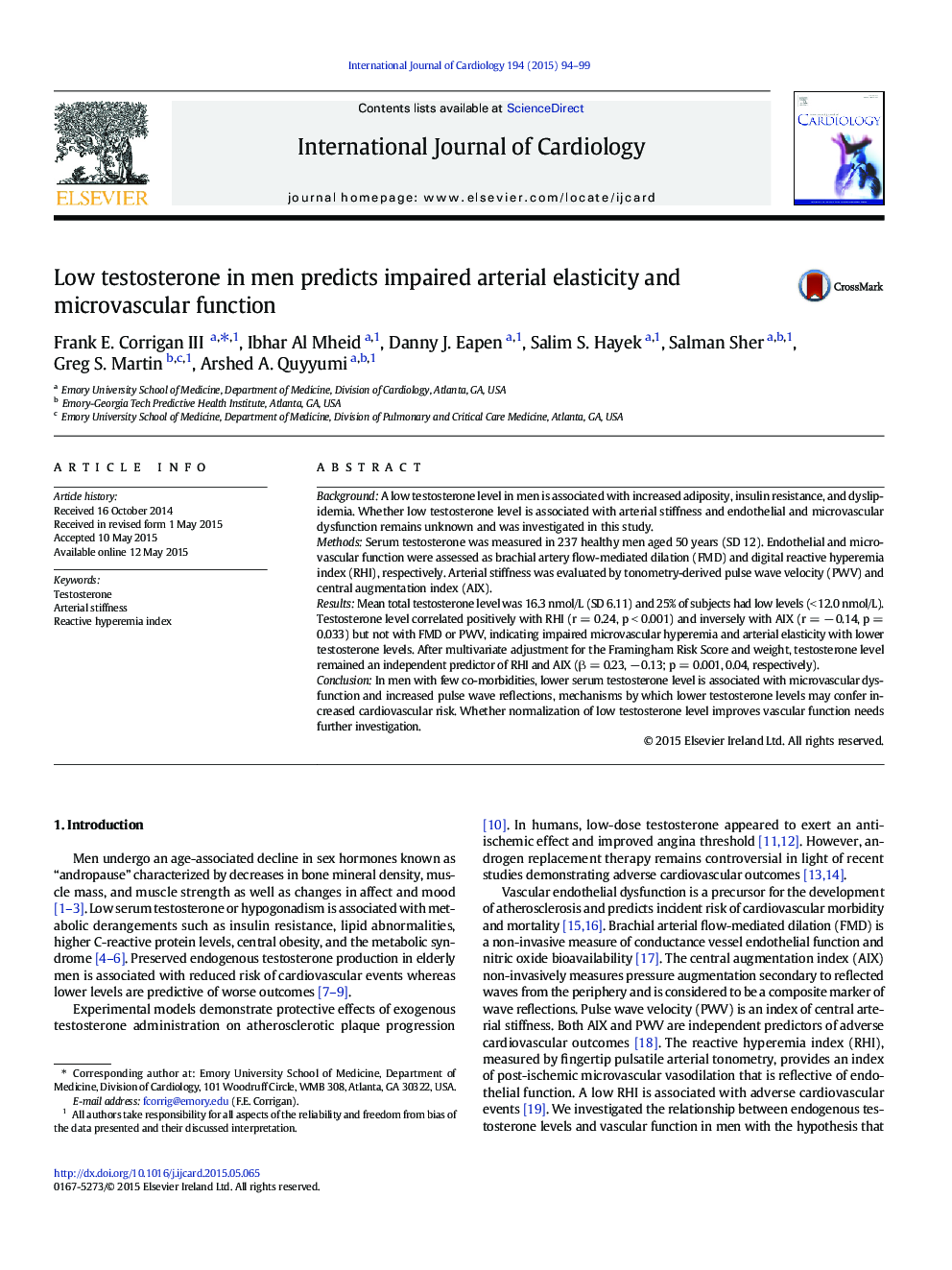| Article ID | Journal | Published Year | Pages | File Type |
|---|---|---|---|---|
| 5966522 | International Journal of Cardiology | 2015 | 6 Pages |
BackgroundA low testosterone level in men is associated with increased adiposity, insulin resistance, and dyslipidemia. Whether low testosterone level is associated with arterial stiffness and endothelial and microvascular dysfunction remains unknown and was investigated in this study.MethodsSerum testosterone was measured in 237 healthy men aged 50 years (SD 12). Endothelial and microvascular function were assessed as brachial artery flow-mediated dilation (FMD) and digital reactive hyperemia index (RHI), respectively. Arterial stiffness was evaluated by tonometry-derived pulse wave velocity (PWV) and central augmentation index (AIX).ResultsMean total testosterone level was 16.3 nmol/L (SD 6.11) and 25% of subjects had low levels (< 12.0 nmol/L). Testosterone level correlated positively with RHI (r = 0.24, p < 0.001) and inversely with AIX (r = â 0.14, p = 0.033) but not with FMD or PWV, indicating impaired microvascular hyperemia and arterial elasticity with lower testosterone levels. After multivariate adjustment for the Framingham Risk Score and weight, testosterone level remained an independent predictor of RHI and AIX (β = 0.23, â 0.13; p = 0.001, 0.04, respectively).ConclusionIn men with few co-morbidities, lower serum testosterone level is associated with microvascular dysfunction and increased pulse wave reflections, mechanisms by which lower testosterone levels may confer increased cardiovascular risk. Whether normalization of low testosterone level improves vascular function needs further investigation.
